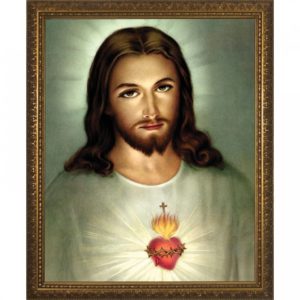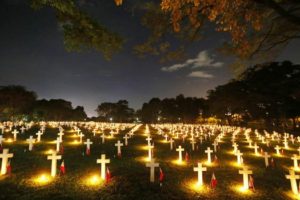Sagrada Familia by Gaudi – Catholic Basilica in Barcelona, Spain
Ongoing Construction Project that began 137 Years Ago
12 Interesting Facts and 30 Beautiful Pictures

La Basílica de la Sagrada Familia
“The Basilica of the Holy Family”
12 Interesting Facts About Sagrada Familia by Gaudi
- La Sagrada Familia is a UNESCO World Heritage Site in Barcelona, Spain.
- Is a Catholic Basilica that has been under construction for over 137 years.
- Construction began in 1882, and it is still actively being worked on — making it the longest-running active construction project on Earth.
- La Sagrada Familia is home to the tomb of Antoni Gaudí.
- Nature greatly influenced the design of Sagrada Familia.
- The Sagrada Familia has been completely funded by private money. The budget, approximately €25 million a year, is entirely obtained through entrance tickets to the church and through private donations.
- More than 3 million people visit the Gaudí masterpiece every year.
- It used to be the site of a school! During the beginning of the cathedral’s construction, a school was built called the Sagrada Familia Schools building.
- It’s the tallest religious building in Europe.
- The La Sagrada Familia has a total of eight towers, and by the time the building is completed in 2026, it will have a total of 18 towers. The tallest tower signifies Jesus, and another signifies the Virgin Mary, 4 other towers signify the evangelists while the last 12 signify the 12 apostles of Jesus Christ.
- The Nativity Facade is the only part of the basilica that Gaudí designed in its entirety.
- People have tried to take it down. In 1936, in the midst of the Spanish Civil War, a group of anarchists broke into the Sagrada Familia and set fire to the crypt. Though many important materials involving the construction were lost, a few were saved.
History of Sagrada Familia by Gaudi
The Architect of the Sagrada Familia was Antoni Gaudí (1852-1926).

When 31-year-old Gaudí received the commission to build the Sagrada Familia church, he drew up plans for a towering structure with 18 spires representing the 12 Apostles, four evangelists, the Virgin Mary, and Jesus Christ.

Gaudi’s plan was to have the basilica be Barcelona’s highest building, just 50 centimeters less than Barcelona’s nearby Montjuïc mountain. When finished, this would become the tallest church on the planet.
Gaudí was a devout Catholic who believed that the deepest way to commune with God was through nature.
So, in contrast with the grand exterior, the inside of the Sagrada Familia is meant to feel like a naturalistic forest of stone.
Massive pillars stretch from floor to ceiling, where their twisting branches intertwine to form an ornate canopy.

The church’s famous Nativity Facade looks from a distance like a supersized drip sandcastle. Its design is unlike any building in the world.

Work was slow due to the technical complexities of the cathedral and the fact that it relied solely on private donations.
Gaudí worked on the Sagrada Familia for 40 years, fully devoting the last years of his life to the project. “He wanted to write the history of the Catholic faith in one building,” biographer, Gijs van Hensbergen, told the TV show “60 Minutes.”
Van Hensbergen added that Gaudí slept at the construction site and took little care for appearance, wearing frayed pants held up by a rope belt.
Gaudí knew that he wouldn’t live to complete his masterwork, so he drew up detailed architectural plans, and most importantly, scale plaster models of each of the cathedral’s sculpted facades and towering spires.
When Gaudí was killed in a 1926 tram accident, his associates were able to keep building based on the architect’s drawings and models.
But then the Spanish Civil War erupted in 1936, and gangs of anarchists targeted churches as symbols of institutional oppression. The Sagrada Familia was attacked, and although the structure was miraculously saved, the anarchists broke into the architects’ workshop.
Gaudí’s models and most of his drawings were destroyed by anarchist revolutionaries 10 years after his death.
Without the plaster models, progress on Sagrada Familia slowed to a crawl, further delayed by the decades-long fascist rule of Francisco Franco.
Ever since, generations of architects and engineers have labored to piece together Gaudí’s singular vision and finish his greatest work.
LINK to see Sagrada Familia time-lapse of how the basilic will look when it is completed

The Nativity Facade
The Nativity Facade: Work on the east-facing Nativity façade took 41 years, with it being completed in 1936, ten years after Gaudí’s death.
This is the only part of the basilica that Gaudí designed in its entirety.

![]()



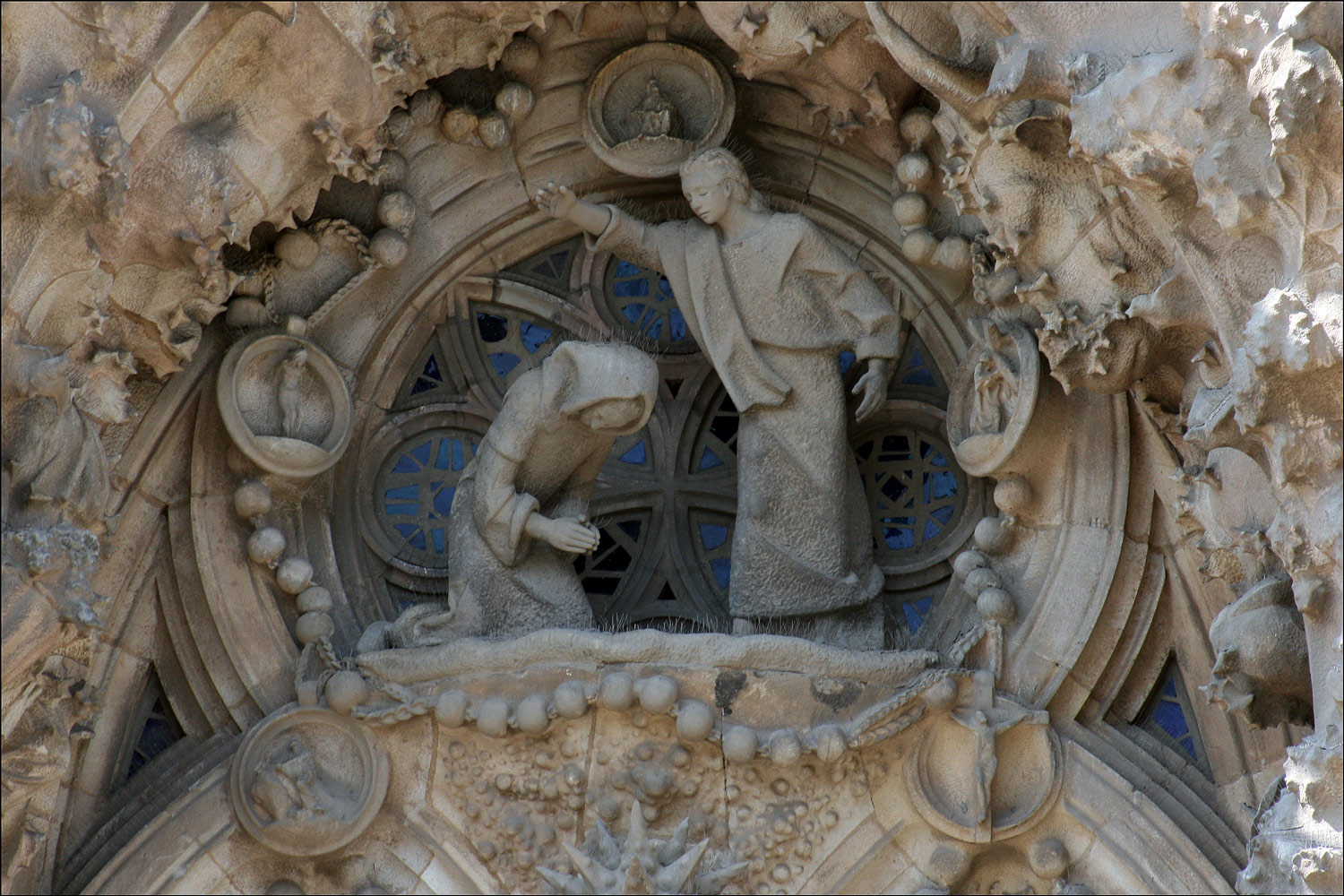
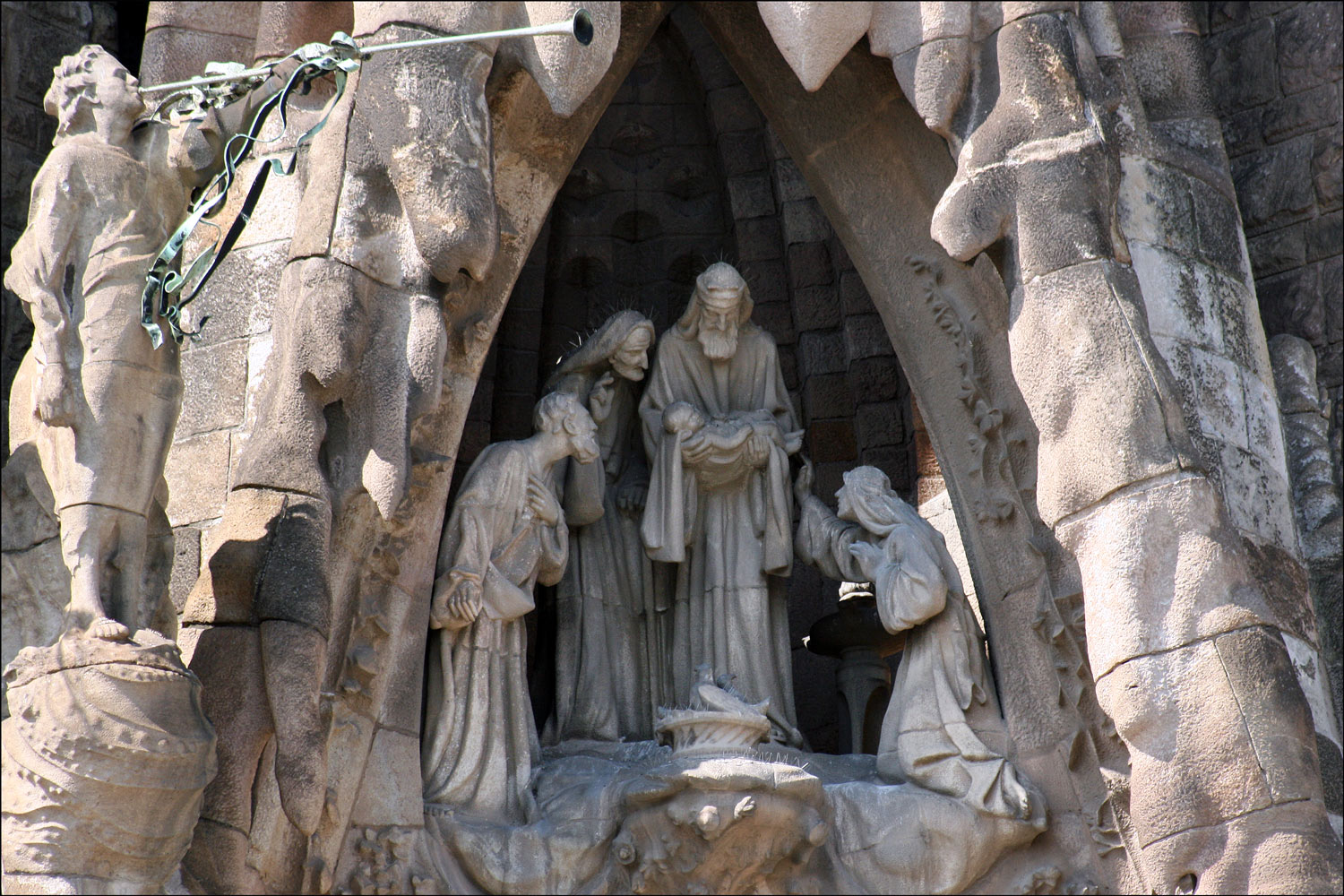
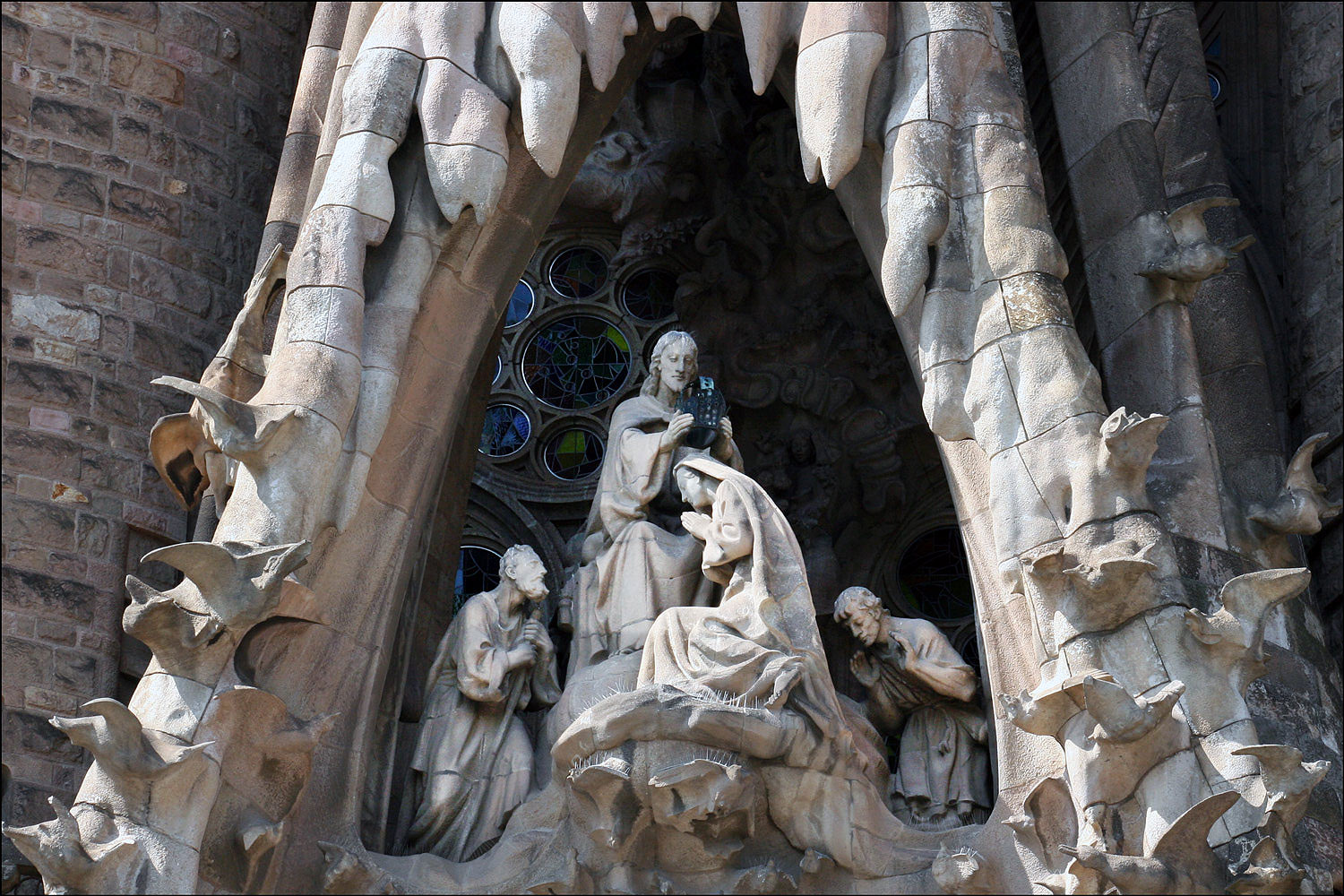
LINK Stephen Danko Photographs


LINK Real Models used to design Nativity Facade
The Passion Facade
The Passion Facade: Guided by drawings made by Gaudi, work on the Passion Facade started in 1954 and was completed in 1976. This façade has a skeletal feel, with pillars resembling bones and expressive sculptures re-enacting the last week of Christ’s life.









The Glory Facade
The Glory Facade represents Christ’s eternal glory and is the only one yet to be completed.
It features scenes of Christ’s rise to heaven and eternal bliss.
Gaudí only left a structural study and the symbolic and graphic plan of this façade.
The Glory façade is structured as the other two facades, with four bell towers grouped by pairs.
Construction began on the Glory facade in 2002. Although unfinished, it is already the tallest of all the towers.
Interior of the Sagrada Familia by Gaudi
Gaudí was a devout Catholic who believed that the deepest way to commune with God was through nature.
So, in contrast with the grand exterior, the inside of the Sagrada Familia is meant to feel like a naturalistic forest of stone.
Massive pillars stretch from floor to ceiling, where their twisting branches intertwine to form an ornate canopy. Work was slow due to the technical complexities of the cathedral and the fact that it relied solely on private donations.
Columns were no longer forms that merely carried weight, but were stone trees arranged as if in a forest, bathed in ever-changing light, reaching upwards.




 Sagrada Familia by Gaudi
Sagrada Familia by Gaudi
________________________________
LINK St Michael the Archangel by Reni
_______________________________
References
